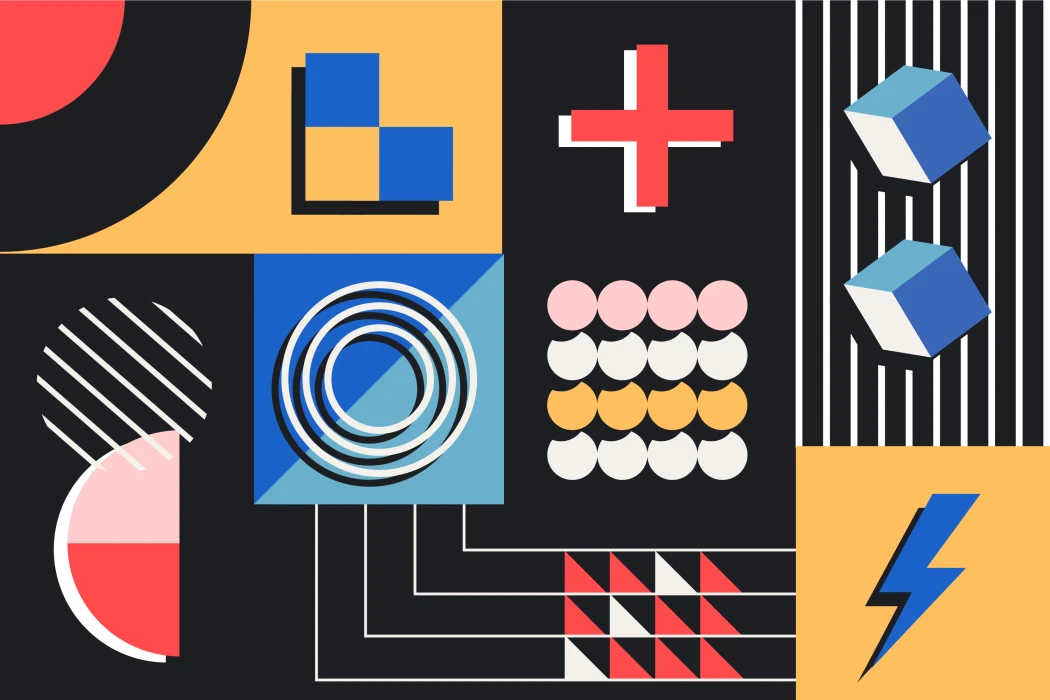Throughout history, art has dramatically shaped our perception and approach to design. Various art movements have left a lasting mark on contemporary imagery and aesthetics, influencing modern branding, packaging, web design, and more. This article explores specific examples of how elements from art history continue to shape today's design trends.
The Influence of Artistic Movements on Contemporary Design Trends
This article explores the enduring legacy of several essential art movements and their influence on contemporary design trends. Through specific examples, we'll reveal how the visual languages and conceptual frameworks of Cubism, Art Nouveau, Pop Art, Bauhaus, Renaissance, Post-Impressionism, and Minimalism continue to shape modern branding, packaging, web design, and more. From the fragmented shapes of Cubist logos to the elegant patterns of Art Nouveau packaging, from the vibrant color palettes of Pop Art branding to the minimalist clarity of Bauhaus-inspired user interfaces, we'll examine how these historical art styles form the basis for innovative design solutions today.
The past remains a vital source of inspiration, reminding us that while technology and tastes evolve, the fundamental principles of good design—beauty, functionality, clarity, and emotional resonance—are timeless. Join us as we journey through the intersections of art and design, revealing how the creative genius of previous eras continues to influence and enrich our visual world.
Cubism in Logo Design
Introduced by Pablo Picasso and Georges Braque, Cubism revolutionized the art world by challenging traditional representations. He brought to the fore an abstraction characterized by bold shapes, flat monochrome, and overlapping planes. These principles are incorporated into modern logo design, giving brands a visually unique and dynamic character.
For example, Picasso's Les Demoiselles d'Avignon shows Cubism's radical departure from traditional compositions and perspectives. The painting's fragmented, jagged shapes have inspired contemporary logos that use dynamic, disjointed elements.
Adidas: The brand's iconic three stripes are stylized in a fragmented manner, suggesting movement and dynamism, reflecting Cubist principles.
NBC: The peacock logo features geometric shapes representing feathers, creating a harmonious and visually appealing composition that echoes Cubism's emphasis on abstraction.
Art Nouveau and Packaging Design
Art Nouveau, known for its intricate details, delicate curves, and organic forms inspired by nature, has profoundly influenced packaging design. This movement aimed to make high art accessible to the masses, blending aesthetics with functionality.
Alphonse Mucha, a key figure in Art Nouveau, has impacted modern packaging with his elegant and decorative designs.
Perrier-Jouët: The champagne house's packaging often features flowing floral motifs that enhance the product's luxury and sophistication, reflecting Mucha's influence.
Modern hipster designs are also influenced by Art Nouveau and Art Deco, as evident in the intricate packaging of craft gin labels and barber products.
Pop Art and Branding Color Palettes
Pop Art emerged in the 1950s as a response to traditional art forms, embracing consumer culture and media. Known for its bold colors and iconic symbols, Pop Art has left a lasting impact on branding.
Andy Warhol and Roy Lichtenstein: These artists popularized the use of everyday objects, celebrities, and slogans in art, mirrored in brand color palettes.
Pepsi, Fanta, Nickelodeon, Instagram, AirBnB: These brands use vibrant colors and playful aesthetics to engage audiences, drawing from Pop Art's bold and lively palettes.
Bauhaus Principles in Website Design
Walter Gropius, the founder of the Bauhaus, considered beauty an essential requirement of life. He wanted to build a laboratory to discover a "total work of art."
Apple: Known for its minimalist design philosophy, Apple products like the iPhone and MacBook showcase sleek, uncluttered designs prioritizing usability, reflecting the Bauhaus emphasis on accessibility and functionality.
Google: The Material Design language mirrors Bauhaus principles with its clean lines and focus on clarity. Google's interfaces prioritize intuitive interactions, echoing the movement's commitment to user-friendly design.
Renaissance Influence on Architecture and Design
The Renaissance, which lasted from the 14th to the 17th centuries, embodied a significant cultural revival in Europe. It sparked a renewed fascination with classical antiquity's artistic, architectural, and intellectual accomplishments. This period transformed the arts and established fundamental principles that continue to shape contemporary design. The emphasis on symmetry, proportion, and harmony during the Renaissance has left a lasting impact on diverse design disciplines, from architecture to product design, contributing to the aesthetic and functional principles that guide modern practices.
With its revival of Greek and Roman heritage, Renaissance art has influenced various aspects of modern design, from architecture to fashion.
Symmetry and Balance: Contemporary architecture employs symmetrical layouts and balanced proportions to create visually appealing and structurally sound buildings. The principles of symmetry and proportion are evident in modern residential and commercial architecture, where designers strive for a harmonious relationship between different structural elements.
Geometric Precision: The use of geometric forms and precise measurements in Renaissance architecture is mirrored in today's design practices. Modern architects and designers use advanced software to create accurate models and plans, ensuring that buildings are aesthetically pleasing and functionally efficient.
Symmetrical arrangements, triangular pediments, square lintels, domes, and niches: These elements from Renaissance architecture are still studied and incorporated into contemporary building designs.
Post-Impressionism in Modern Media
The vivid expressionism and abstract qualities of Post-Impressionism continue to inspire modern media.
Paul Cézanne and Vincent Van Gogh: Their works, characterized by geometric shapes and expressive use of color, influence contemporary art, music album covers, and digital media.
Minimalism in Contemporary Design
Emerging post-World War II, Minimalism emphasizes simplicity and functionality, principles that align with sustainability initiatives.
Sandra Cisneros, Japanese culture, Charlotte Moorman, Hans Zimmer: Minimalist approaches in literature, film, music, and app design demonstrate how less emphasis and muted colors create potent impacts.
Modern brands and interfaces adopt minimalistic designs, reflecting professionalism and clarity, with logos and digital interfaces becoming more straightforward and focused.
Conclusion: The Timeless Reservoir of Artistic Inspiration
The enduring influence of classical art movements continues to shape contemporary design, revealing the timeless appeal of historical artistic principles. From Cubism to Minimalism, these movements serve as a rich source of inspiration for modern aesthetics and brand identities. In the digital age, these historical artistic principles are more accessible than ever, emphasizing art trends' cyclical nature and ability to meet present-day needs.
Tags
Subscribe to
Our
Newsletter
Join 1,000+ people and recieve our weekly insights.

Success!
Thank your for subscribing to Buzzvel's
Newsletter, you will now
receive
amazing
tips
and insights weekly.

-normal.webp)


